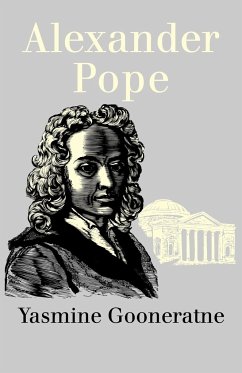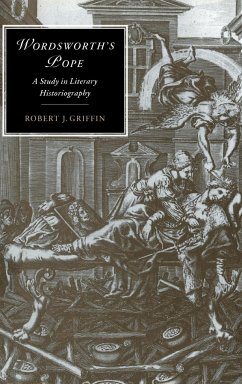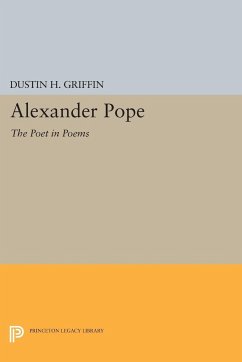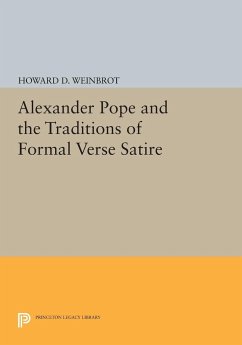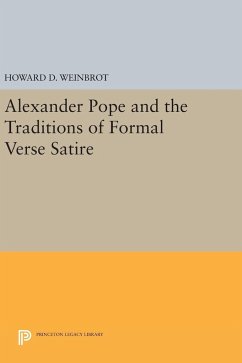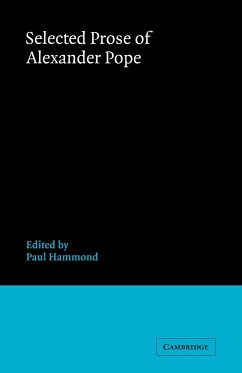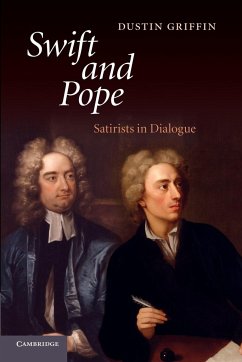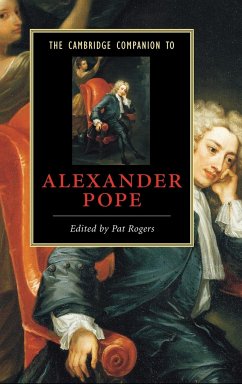
Pope and Horace
Studies in Imitation

PAYBACK Punkte
53 °P sammeln!
Pope printed his Imitations of Horace alongside the original Horatian poems on which they were based, and to understand these works fully it is necessary to compare in detail each Imitation with its original. This is the first book to do so. Through a close analysis of each Horatian poem (translated anew, for the many readers of Pope who do not know Latin), Mr Stack explores the complex and subtle intertextual relationship between Pope's Imitations and their originals. An important feature of the book is the detailed comparison with other eighteenth-century views of Horace. Two chapters on the...
Pope printed his Imitations of Horace alongside the original Horatian poems on which they were based, and to understand these works fully it is necessary to compare in detail each Imitation with its original. This is the first book to do so. Through a close analysis of each Horatian poem (translated anew, for the many readers of Pope who do not know Latin), Mr Stack explores the complex and subtle intertextual relationship between Pope's Imitations and their originals. An important feature of the book is the detailed comparison with other eighteenth-century views of Horace. Two chapters on the interpretation of Horace in the seventeenth and eighteenth centuries highlight the power and originality of Pope's treatment. By drawing upon a wide range of twentieth-century criticism of Horace, Mr Stack shows that Pope's Imitations are still challenging and can make us look afresh at Horace's poems. The thrust of the book is to emphasize the radical nature of Pope's interpretation of Horace, an engagement which is both dynamic and changing. Pope responds to the most significant aspects of Horace - the treatment of human inconsistency, the explorations of the nature of the self, the movement between scepticism and idealism - and re-explores these themes in his own poetry. In their profound debt to Horace, and in their attempt to become vigorously independent from him, these Imitations stand as one of the most remarkable examples of intertextuality in English literature.
Table of contents:
Acknowledgements; List of abbreviations; Preface; Part I. Introduction: 1. Interpreting Horace; 2. Imitation; Part II. Three Horatian Satires (1733-4): 3. Raillery and energy; 4. Horace, moral; 5. Horace, immoral; Part III. Mature Horace (1736-7): 6. Lyric vision; 7. The Horatian epistle; 8. Poetry and politics; Part IV. The Time of Tension (1738): 9. Idealism and scepticism; 10. Fables of the self; 11. The Stoic self; Epilogue; Appendix; Notes; Bibliography; Index.
Pope printed his Imitations of Horace alongside the original Horatian poems on which they were based, and to understand these works fully it is necessary to compare in detail each Imitation with its original. This is the first book to do so.
The thrust of the book is to emphasize the radical nature of Pope's interpretation of Horace, an engagement both dynamic and changing.
Table of contents:
Acknowledgements; List of abbreviations; Preface; Part I. Introduction: 1. Interpreting Horace; 2. Imitation; Part II. Three Horatian Satires (1733-4): 3. Raillery and energy; 4. Horace, moral; 5. Horace, immoral; Part III. Mature Horace (1736-7): 6. Lyric vision; 7. The Horatian epistle; 8. Poetry and politics; Part IV. The Time of Tension (1738): 9. Idealism and scepticism; 10. Fables of the self; 11. The Stoic self; Epilogue; Appendix; Notes; Bibliography; Index.
Pope printed his Imitations of Horace alongside the original Horatian poems on which they were based, and to understand these works fully it is necessary to compare in detail each Imitation with its original. This is the first book to do so.
The thrust of the book is to emphasize the radical nature of Pope's interpretation of Horace, an engagement both dynamic and changing.





